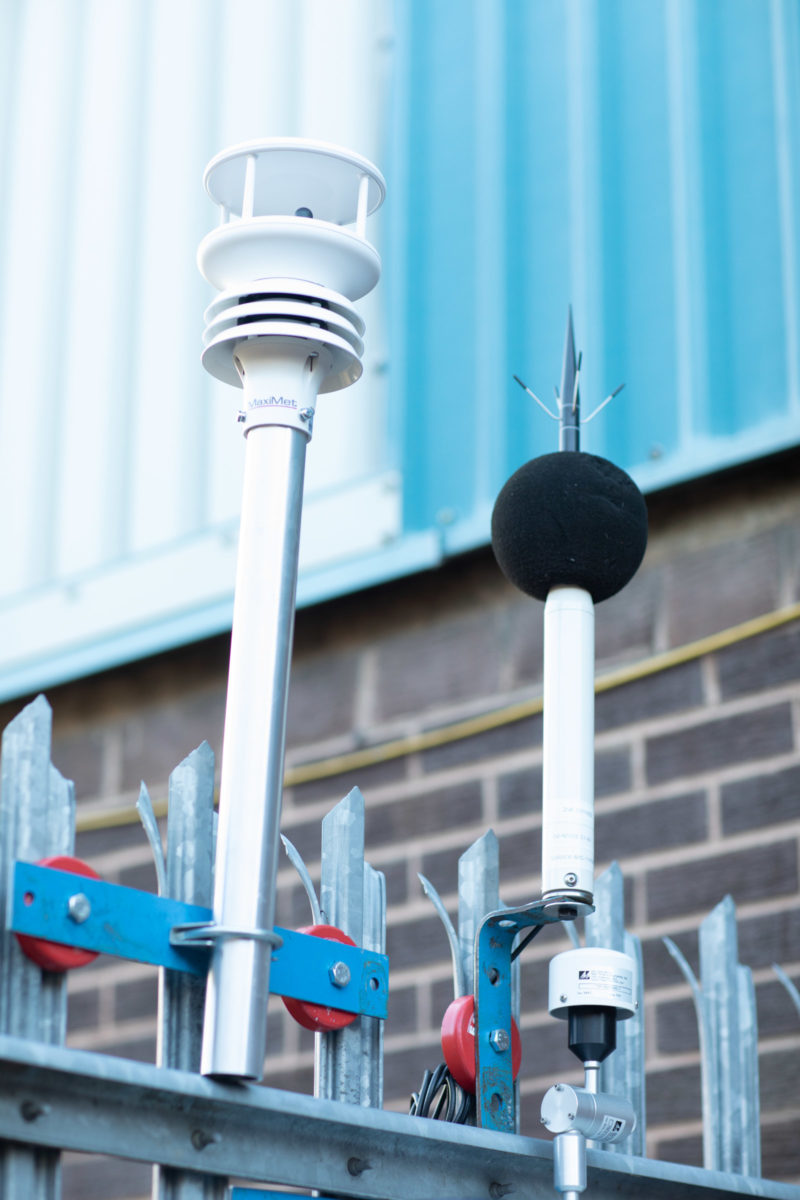
Maintaining or repairing water infrastructure can lead to large groundworks excavations being carried out in residential areas, close to other buildings and infrastructure. As such, demonstrating adherence to Section 61 and both their environmental and social responsibilities is a key consideration for contractors. Here, Lisa Bury, utilities expert at Mabey Hire, explores the role that environmental monitoring technology can play.
WHEN it comes to repairing, investing and upgrading our country’s water infrastructure, groundworks excavations of all sizes and complexities will be required. By the very nature of the utility sector, with pipelines stretching across the whole country, connecting villages, towns and cities to fresh water and wastewater treatment services, utility contractors will find themselves carrying out ground excavations in both rural and urban locations.
While all locations present their own unique challenges, working in built-up, residential areas within our towns and cities can be especially challenging. As well as considering access requirements and the logistics of getting plant machinery to site, consideration of the local community, businesses, buildings and infrastructure is essential. Section 61 applications form a critical part of this, with local authorities requesting information about proposed site operating hours, as well as details of the plans in place to assess noise, vibration and dust levels on-site.
Given the importance of contractors being able to demonstrate recognition of their social and environmental responsibilities, environmental monitoring solutions can have an important role to play.
One example is vibration monitoring. With the potential for deep excavations to be carried out within close proximity of surrounding buildings and live infrastructure, it is vital to ensure that both the excavation process and the subsequent engineering works do not cause any structural damage. By employing vibration monitoring, following the British Standard Code of Practice for vibration (BS 5228-2:2009+A1: 2014), project managers and engineers can gain instant visibility into the site conditions, first establishing a baseline and then monitoring the level of any subsequent vibrations. As well as potentially causing structural movement and damage to surrounding buildings, excessive vibrations can also have a detrimental impact on any existing underground services nearby, such as water and gas mains.

By using monitoring to detect these vibration levels and setting an automatic alert, site managers can be notified should vibrations exceed a pre-set limit, enabling those on site to temporarily halt work and make any changes needed. As well as pre-empting potential crises and helping teams work more safely, this access to live in-the-moment data and the security of automatic alerts can reduce the reliance on manual inspections, saving resources and eliminating excess journeys to site.
What’s more, given the easily accessible and visible data, contractors can clearly demonstrate their adherence to the safe limits during any given time period, providing a robust solution to compliance concerns and protecting them against potential claims or complaints.
Of course, vibration is just one of the factors that environmental monitoring solutions can be used for, with the technology able to be applied to numerous conditions, including dust, noise, VOCs and pH levels. It’s important to note that monitoring solutions aren’t just for the protection of property and infrastructure, but people too. All contractors have a social responsibility, ensuring that any works do not have a detrimental effect in the local community or put their own works at a safety risk.
Understandably, large excavations and construction works – whether repairing a burst pipe or installing an entirely new section of pipeline – has the potential to generate a large amount of dust and noise. As well as having a serious impact on the environment, dust and noise pollution can also negatively affect the health and wellbeing of both those on site and those who live, work or study locally.

For example, to ensure that noise levels do not cause annoyance or distress to those within the local surroundings, many councils will require either ongoing or ‘spot’ monitoring of noise levels. In such circumstances, contractors must be able to rely on an effective monitoring solution that can provide accurate and responsive decibel readings, to report disturbance to surrounding areas and actual noise levels for onsite workers.
Mabey Hire has a range of monitoring solutions suitable for the task, such as its fully automated, stand-alone Enviroguard system, which is fully compliant to BS7385, BS5228 and DIN4150-2. The innovative solution enables real-time 24/7 measurement of site conditions, supported by comprehensive site data with alert capability, in full compliance with Section 61 planning restrictions. With impressive and easy to digest real-time data at your fingertips, available in Mabey Hire’s unique Insite portal, contractors are able to protect themselves from costly local enforcement or legal actions.
As utility companies and contractors look to progress with the latest engineering and construction works, particularly as part of the AMP7 period, it’s important to consider their environmental and social responsibilities. With a large portion of water investment, upgrade and repair works expected to be carried out within urban areas, environmental monitoring solutions can be invaluable, enabling contractors to demonstrate and ensure compliance.










